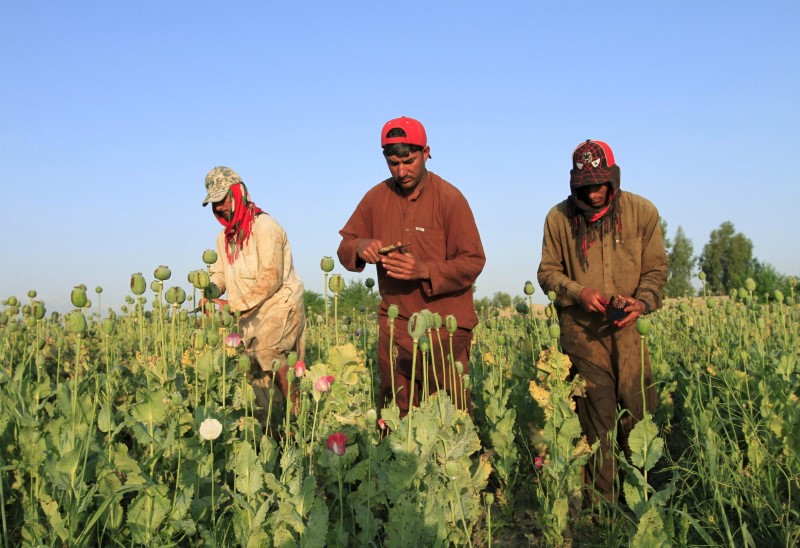Image: Afghan men gather raw opium on a poppy field on the outskirts of Jalalabad in this April 28, 2015
VIENNA (Reuters) – The cultivation of opium poppy in Afghanistan, the world’s main source of heroin, has risen to its third-highest level in more than 20 years, the United Nations confirmed on Sunday, as the Taliban insurgency gains ground.
In the key findings of its annual Afghanistan opium survey, the U.N. Office on Drugs and Crime (UNODC) said the total area of land devoted to poppy cultivation had risen 10 percent in 2016 to 201,000 hectares (497,000 acres).
“The survey shows a worrying reversal in efforts to combat the persistent problem of illicit drugs and their impact on development, health and security,” UNODC Executive Director Yury Fedotov said in a statement.
The government’s loosening grip on security in many areas contributed to a collapse in poppy eradication efforts, a method championed by the United States after it led an invasion of Afghanistan in 2001 when the country was under Taliban rule.
“Eradication has dropped precipitously to 355 hectares — a fall of some 91 percent,” Fedotov said. The report said cultivation was also spreading to new areas, as the number of poppy-free provinces fell to 13 from 14 out of a total of 34.
The report confirmed a statement by Fedotov earlier this month that the area under cultivation in 2016 had exceeded 200,000 hectares, putting it in the top three years since the UNODC began providing estimates in 1994.
Fedotov’s statement on Oct. 4 was made at a conference in Brussels at which world powers raised $15 billion to fund Afghanistan over the next four years.
Taliban successes on the battlefield have exposed the defensive limits of Afghanistan’s NATO-trained armed forces, which are supposed to number 350,000 personnel but which have been heavily depleted by casualties and desertion.
“Strong increases (in cultivation) were observed in the northern region and in Badghis province where the security situation has deteriorated since 2015,” the UNODC said. The western region, which includes Badghis, has the second-biggest area under cultivation after the southern region.
The key findings released on Sunday said there had also been a 30 percent increase in the estimated yield from poppy fields this year, bringing potential production to the seventh-highest on record, 43 percent more than in 2015.
The UNODC added, however, that its yield estimate was less reliable than that of the area under cultivation.
“There are some limitations in these estimates since the yield survey was not implemented in all main cultivating provinces for security reasons,” it said. “For the provinces not covered, the regional average was used.”
(Reporting by Francois Murphy; Editing by Helen Popper)
Copyright 2016 Thomson Reuters. Click for Restrictions.


